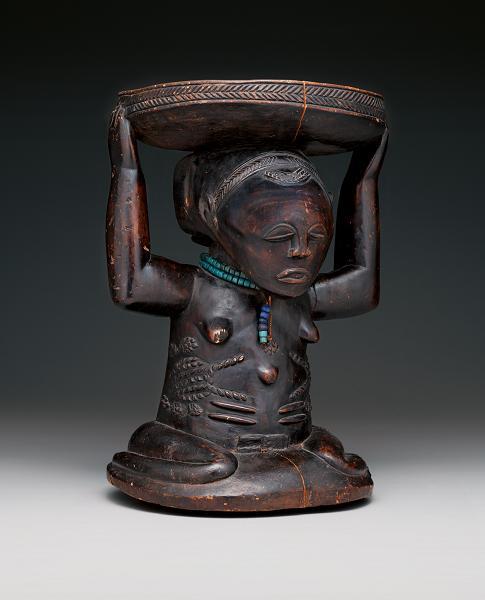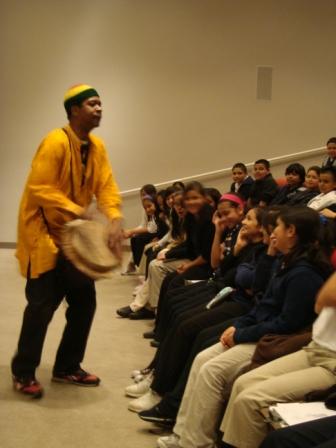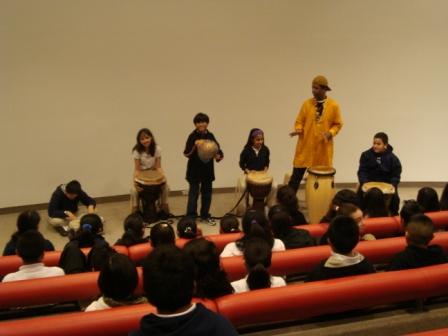To cap off a fantastic school year, visual arts students at Booker T. Washington High School for the Performing and Visual Arts enrolled in our Learning Lab created self-guides for their favorite works of art at the DMA. These eleventh-grade students began many of their Learning Lab classes with a walk down Flora Street to the Museum, where they spent time looking at works of art, asking questions about them, and responding to them through group discussions, written ideas, and their own original works of art.
For their final projects, we asked students to choose four or five works of art in our collection to include in a self-guided tour, for which they decided the title and theme. They wrote a short paragraph about each artwork to explain why they chose to include it and what stood out to them. Because self-guided tours are intended to offer visitors short and interesting factoids or interpretations of a work of art, students were encouraged to be creative with their paragraphs and incorporate prompts or provocative questions that would encourage close looking and connection-making with ideas related to the work. Here are some excerpts from their fantastic finished products!
[Maternal]
“Exploring only a few examples throughout art, this guide surfaces one relationship that every individual from every culture has experienced to some degree: a mother and her child.”
Guillermo Meza, Mother and Child, 1953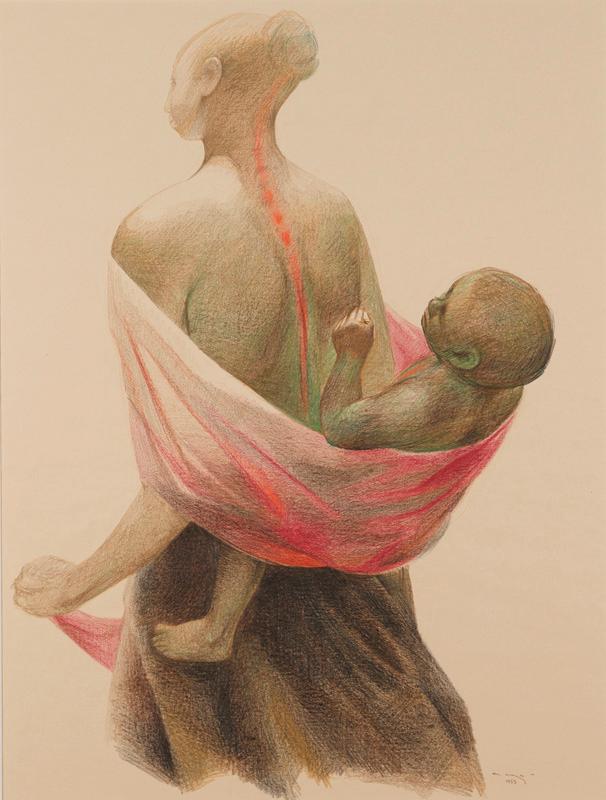
“This piece depicts a mother carrying her young child with a vibrant fleshy pink cloth, pulsing all the way though her spine, much like her love and seeming will for her child. Where do you think they are going, or rather, where are they coming from? What ties you to your mother?”
Ms.: An Introduction to Women in Art
“This self-guide illustrates the woman in her own, natural, (sometimes stereotypical) element.”
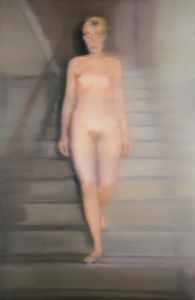
Gerhard Richter, Ema (Nude on a Staircase) (Ema [Akt auf einer Treppe]), 1992
“Ema (Nude on a Staircase) is a photograph of a paintng that was created in 1966. This image was purposely blurred to create nostalgic distance. What famous work of art by Marcel Duchamp could Ema have been inspired by?”
Texas Beauty
“When someone says “Texas,” what are the first images that pop into anyone’s head? Probably cattle, dry land, maybe some wildflower. This self-guided tour will take you “deep in the heart of Texas” and give you a true tour of this majestic land.”
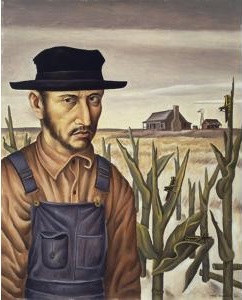
Jerry Bywaters, Share Cropper, 1937
“It is hard to drive more than 150 miles in Texas without spotting a farmer doing his work. What do you think are some stereotypes farmers have? Does this farmer display any of them?”
American Landscape Paintings
“Have you ever wondered what it feels like to be so fully immersed in a painting that you actually feel like you are inside it? This self-guided tour will show you landscape paintings all by American artists. From cold icebergs to sunny beaches, the beautiful landscapes will take you on a journey all around the world.”
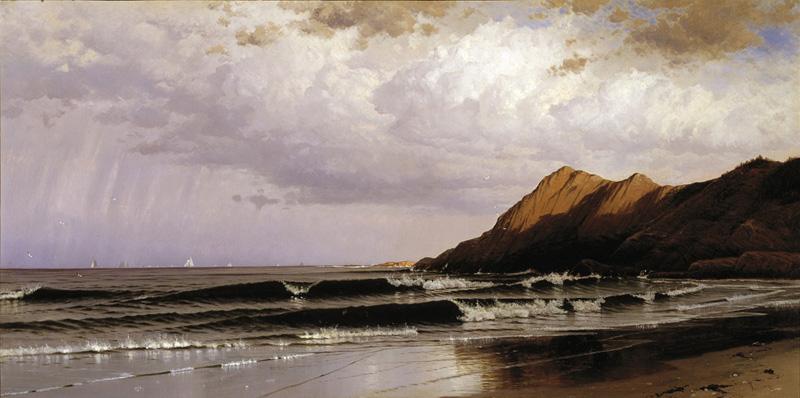 Alfred Thompson Bricher, Time and Tide, 1873
Alfred Thompson Bricher, Time and Tide, 1873
“Can you feel the tide pull back and forth? Can you sense the sand crunching underneath your toes, the water touching your soles, making a shiver run down your back? Close your eyes and let your senses take over. Listen to the crash of waves as they attach the rocks, feel the sun bathe your body, and soak it in.”
Works shown:
- Guillermo Meza, Mother and Child, 1953, Dallas Museum of Art, gift of Mr. and Mrs. Richard K. Weil
- Gerhard Richter, Ema (Nude on a Staircase) (Ema [Akt auf einer Treppe]), 1992, Dallas Museum of Art, Dallas Museum of Art League Fund, Roberta Coke Camp Fund, General Acquisitions Fund, DMA/amfAR Benefit Auction Fund, and the Contemporary Art Fund: Gift of Mr. and Mrs. Vernon E. Faulconer, Mr. and Mrs. Bryant M. Hanley, Jr., Marguerite and Robert K. Hoffman, Howard E. Rachofsky, Deedie and Rusty Rose, Gayle and Paul Stoffel, and two anonymous donors
- Jerry Bywaters, Share Cropper, 1937, Dallas Museum of Art, Allied Arts Civic Prize, Eighth Annual Dallas Allied Arts Exhibition, 1937
- Alfred Thompson Bricher, Time and Tide, c. 1873, Dallas Museum of Art, Foundation for the Arts Collection, gift of Mr. and Mrs. Frederick Mayer
Andrea V. Severin
Interpretation Specialist


